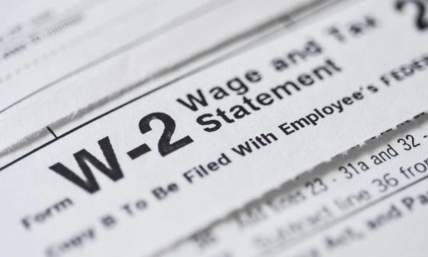What is Form 4797?
Form 4797, a tax form distributed by the IRS, is utilized for reporting gains derived from the sale or exchange of business property. This form covers a wide range of business properties, including those used for generating rental income, as well as those employed for industrial, agricultural, or extractive purposes.
To get a general understanding of the type of information that must be collected for Form 4797, it's necessary to obtain certain details, which may include, but are not limited to:
-
Description of the property
-
Date of purchase
-
Date of sale or transfer
-
Purchase price
-
Gross sales price
-
Depreciation amount
Who needs to file Form 4797?
Any individual or entity that has sold or exchanged business property, including property used for generating rental income, a home used for business purposes, or oil, gas, geothermal, or mineral properties, may need to file Form 4797 to report any gains made from the transaction. Should you need to create payslips for your income, you can always try out the online paystub generator.
In addition, if a piece of property was used partially for business purposes, or to produce income, while also serving as a primary residence, gains from the sale of that property may be eligible for tax exclusion. This is typically the case for self-employed individuals and independent contractors who generate their income from home.
To determine the net profit or loss from the transfer or sale of the business property, taxpayers must subtract the cost basis, or purchase price, from the sum of the sales price minus any depreciation costs. It's important to note that the rules and regulations related to Form 4797 can be complex, and taxpayers may need the assistance of a tax professional to ensure that they are completing the form accurately and in compliance with all relevant tax laws.
Who is not required to file Form 4797?
Individuals who have not sold or exchanged any business property, including property used for generating rental income, a home used for business purposes, or oil, gas, geothermal, or mineral properties, are not required to file Form 4797.
In addition, if a piece of property was used solely as a primary residence and was not used for any business or income-producing purposes, gains from the sale of that property may also be exempt from taxation, and a taxpayer may not need to file Form 4797.
It's important to note that the determination of whether or not to file Form 4797 ultimately depends on the specific circumstances of the transaction and the tax status of the individual or entity involved.
What Is The Difference Between Schedule D & Form 4797?
Although the differences between Schedule D and Form 4797 are minimal to those unfamiliar with the IRS tax code, they do have distinct features. As a result, it can be challenging to know which form to fill out when selling a property that was used for business purposes. This confusion can lead to errors when filing taxes and potentially result in missed opportunities to maximize profits.
Both Schedule D and Form 4797 are designed to report capital gains. However, that is where the similarities end. Schedule D forms are used to report personal gains, while IRS Form 4797 is utilized to report profits from real estate transactions involving business use.
Form 4797 has more specific usage requirements, whereas Schedule D is a mandatory form for anyone reporting personal gains in general. Therefore, when completing Schedule D, individuals reporting gains from the sale of business property will be directed to Form 4797 automatically.
How do I file Form 4797?
The process of filing Form 4797 with the IRS may not be as complex or difficult as it seems at first glance. Obtaining a copy of the form can be done easily through the IRS website or by consulting a local tax preparer to ensure accurate completion. Form 4797 consists of four parts, each dedicated to different types of property transactions.
Form 4797 Instructions Part I: Sales or Exchanges of Property
The instructions for Part I of Form 4797 focus on sales or exchanges of property and cover Line 2 through Line 9.
Line 2 is used to record any properties that were bought or sold and held for more than one year. Filers can report all properties bought or sold on this line without the need for multiple forms. They must provide specific information regarding the dates of sale and purchase, prices, depreciation, maintenance costs, and the exact amount of capital gains or losses realized during the year.
The sale and purchase amounts are then added to the corresponding lines:
-
Line 3 is reserved for any gains reported on line 42 of Form 4684 resulting from casualties or thefts.
-
Line 4 is used to identify any Section 1231 gains from installment sales.
-
Line 5 is for like-kind exchanges reported on Form 8824 that resulted in either Section 1231 gains or losses.
-
Line 6 is used for any gains reported on Line 32 of the tax return, except those resulting from casualties or thefts.
-
Line 7 is where all gains and losses from lines 2-6 are added together.
-
Line 8 is used for non-recaptured Section 1231 losses from any previous year.
-
Line 9 requires filers to subtract the specific amount of non-recaptured Section 1231 losses from Line 7's total.
By following these instructions, taxpayers can accurately report their sales or exchanges of property on Form 4797.
Form 4797 Instructions Part II: Ordinary Gains and Losses
Part Two of IRS Form 4797 also pertains to the sale and exchange of property during the tax filing year. However, unlike Part One, Part Two focuses only on physical real estate held for less than one year or short-term gains that were realized. The same information required in Part One (Lines 2-9) applies to Part Two (Lines 11-18) but is only necessary for business properties where owners have realized short-term capital gains and losses.
Form 4797 Instructions Part III: Gain From Disposition of Property
Part Three of IRS Form 4797 is the lengthiest section, comprising 14 lines that necessitate highly specific information. For instance, owners must report gains on Line 19 if they were realized under any of the following Sections: Sections 1245, 1250, 1252, 1254, and 1255.
If previous owners report gains under any of these sections, they must also include the date they acquired and sold the property on Line 19. Lines 20-24 of Form 4797 require information about the gross sale price, cost basis, depreciation, and total gain for the relevant properties.
Lines 25-29 require previous owners who have realized gains or losses to provide property-specific information in line with the tax code. Finally, Lines 30-32 instruct applicants to add the appropriate lines to compute the total applicable gains.
Form 4797 Instructions Part IV: Recapture Amounts
Part Four of IRS Form 4797 encompasses four lines (Lines 33-35) and focuses mainly on recapture amounts. It's important to note that recapture amount refers to a provision that enables the IRS to collect taxes on any profitable sale that applicants use to offset their taxable income. After correctly filling out Part One, applicants can attach the completed Form 4797 to their tax return.
Where should I mail Form 4797 to?
The mailing address for Form 4797 depends on the location of your residence and whether you are enclosing a payment with your form:
-
If you are not enclosing a payment, you should mail Form 4797 to the address listed in the instructions for the form, based on your state of residence.
-
If you are enclosing a payment, the address may be different depending on the type of payment and the location of your residence. You can find the correct address to send your payment by referring to the instructions for the form or by visiting the IRS website.
It's important to ensure that you are sending your Form 4797 to the correct address to avoid delays in processing or potential penalties. If you have any doubts about the correct mailing address, you can always contact the IRS directly for assistance.













